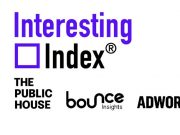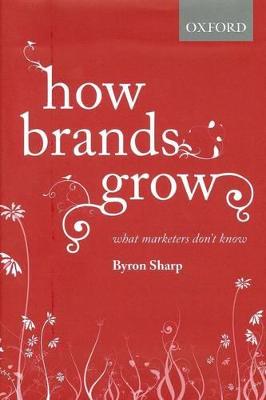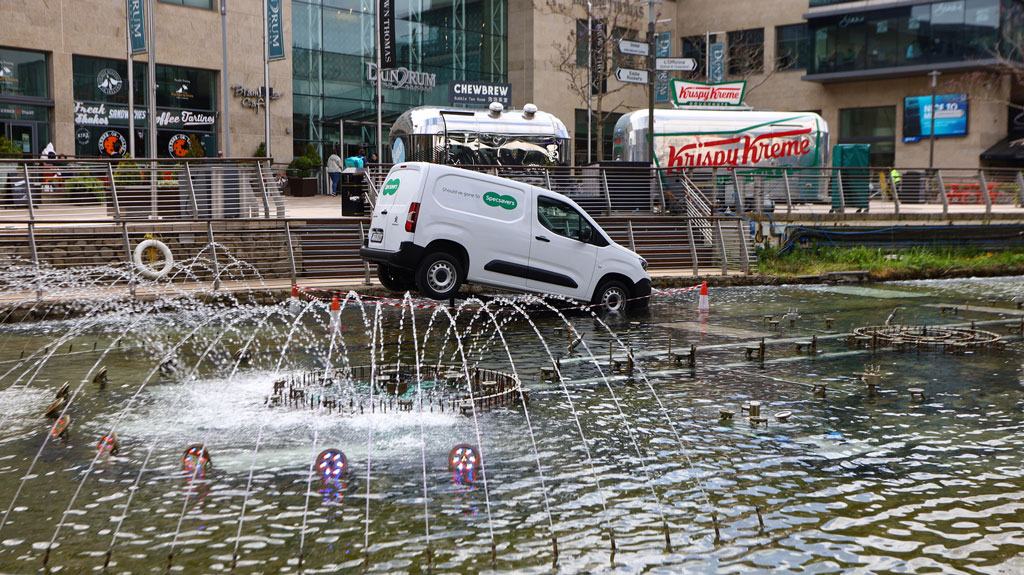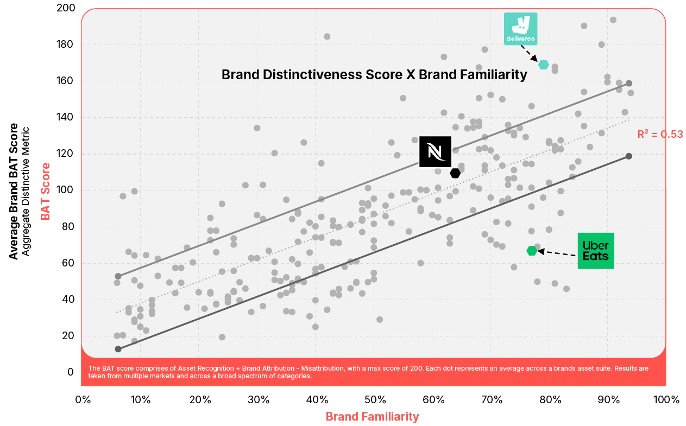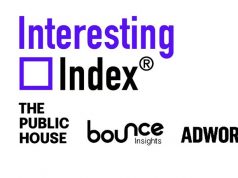 Distinctive brand assets are the Holy Grail of the marketing world yet some brands struggle with them for lots of reasons. Cathal Gillen, co-founder and head of strategy with Distinctive BAT, offers some tips about how brands can can plan for distinctiveness success.
Distinctive brand assets are the Holy Grail of the marketing world yet some brands struggle with them for lots of reasons. Cathal Gillen, co-founder and head of strategy with Distinctive BAT, offers some tips about how brands can can plan for distinctiveness success.
Since the publication of “How Brands Grow” by Byron Sharp and the Ehrenberg Bass Institute, distinctiveness has become a central focus for marketers in their thinking, planning, and action. Distinctiveness plays a major role in helping brands to be more mentally and physically available at key times and to stand out at the point of purchase. As a result, it has become a major consideration for most marketers and a key tenet of most organisations’ strategic thinking in relation to brand building.
At Distinctive BAT, we have tested thousands of distinctive assets across hundreds of brands, and there are several common factors that come to the fore for high-achieving brands. By understanding the composition of distinctive brands and how DBAs become noteworthy, marketing teams can plan for distinctiveness success. While some brands use all the building blocks, others lean on some more than others to great success. Some require discipline, others require creativity, and all require a plan.
The first factor is Prioritisation. It is critical to identify your distinctive assets and to prioritise which will take the lead. While a wide range of assets can be beneficial, it can also lead to a lack of focus and dilution of the use and reach of assets across touchpoints. Some of the most distinctive brands focus on just one or a few assets and prioritise them above all else. While it varies by brand, we often see a drop-off in asset performance around the 3rd or 4th highest scoring asset, especially when you move away from the iconic brands of this world. After this, many brands are spreading themselves too thin. Balance is key; focus on embedding one or two key assets first and step-loading them over time.
This graph shows an aggregate score for each asset in order of ranking for three brands (trend line), and at an averaged-out level across 250 brands (bars).
Secondly, Ruthless Consistency is required. The goal is to maximise exposure of the same assets repeatedly, driven by the level of ruthlessness and consistency across touchpoints from campaign to campaign. Once you have identified which asset(s) take the lead, you must adopt a single-minded approach. Only when you get comments internally about how sick people are of seeing the same assets used over and over, that’s when you know you are on the right path. Guinness are masters at this, with their smart use of the pint. Brennans Bread are also one of the best out there, using colour very smartly, but more importantly being absolutely ruthless in always leaning on red and yellow in their advertising.
Based on our research we can also see the key role creativity plays. Prioritisation and consistency raise the floor; creativity raises the ceiling. It is a massive lever a brand can pull. When it comes to distinctive assets, creativity can take many forms. Firstly, during asset development, deviation from the norm is often at the centre of a strong distinctive asset. If an asset inherently stands out, it already has a significant advantage. Secondly, creativity plays a commanding role in how the distinctive asset is used in advertising. It is important to ensure your distinctive asset is a mandatory component in any brief and to include distinctiveness as part of your creative evaluation process. Specsavers are a brand who not only do the fundamentals well in just ensuring their key assets are front and centre, but also go one step further and bring to life their tagline in fun ways via AV or experiential.
The next factor is Reach & Frequency. These two related variables contribute greatly to DBA success, with brand size heavily correlated. Generally, larger brands have bigger media budgets and a greater scale of owned touchpoints, meaning it is easier for a brand like this to embed distinctive assets.
We see this play out in our global database, with 2 in 3 brands having a DBA suite as powerful as expected based on their brand size (with familiarity used as a proxy for size). However, for the other 1 in 3 brands, their assets either overperformed or underperformed. Deliveroo is an example of a brand that punches above its weight, while Uber Eats underperforms. All other marketing activities held constant, this puts Uber Eats at a disadvantage compared to their more distinctive rivals in Deliveroo and Just Eat. While activation strategies will vary depending on brand size and category, all brands should aim to ensure that owned, earned, and paid channels are maximised to embed assets.
This graph plots a brand’s average BAT score, an aggregate of three key distinctiveness metrics, and brand familiarity, a proxy for brand size.
Finally, Asset Type Usage is key. Different asset types vary drastically in performance, with some consistently outperforming others. Character assets are often standout performers. Our ability to remember faces—especially animals—gives characters a distinct advantage.
NOW, an example of a brand using a character asset in the owl and fox.
Jingles also outperform other asset types; they are incredibly hard-working, sticky devices. Other asset types, like taglines, often play a role more related to meaning and differentiation than distinctiveness, which is fine, not everything needs to play a distinctiveness role. Asset performance also depends on the category and brand. Some categories provide for products or packs in the hands of consumers, allowing them to be embedded much more easily. Some brands have limited AV or audio advertising in their media plan, making leading with a sonic asset or jingle pointless. Clarity on the roles and strengths of different asset types for your brand and category is important in planning for distinctiveness success.
This graph shows the average BAT score, an aggregate of three key distinctiveness metrics, across different types of assets. Data taken from a large range of categories and markets.
We’ve collaborated with many brands and seen first hand how the best marketing and insights teams move the distinctiveness dial. There are practical and actionable steps that teams can take, regardless of where they are on their distinctiveness journey, and we hope our research, findings, and recommendations will help them propel their brands forward.
The full research guide is available to download here on the Distinctive BAT website.
About Distinctive BAT
Distinctive BAT (www.distinctivebat.com) is an Irish based specialist research consultancy focused on helping brands measure and track their Distinctive Brand Assets (DBAs). It assists brands in researching, measuring, and tracking their brand assets to help them become more distinctive and, ultimately, more effective in their marketing efforts. Its clients include LinkedIn, Moët Hennessy, Lipton Tea, Tylenol, ITV, and Kerrygold.




